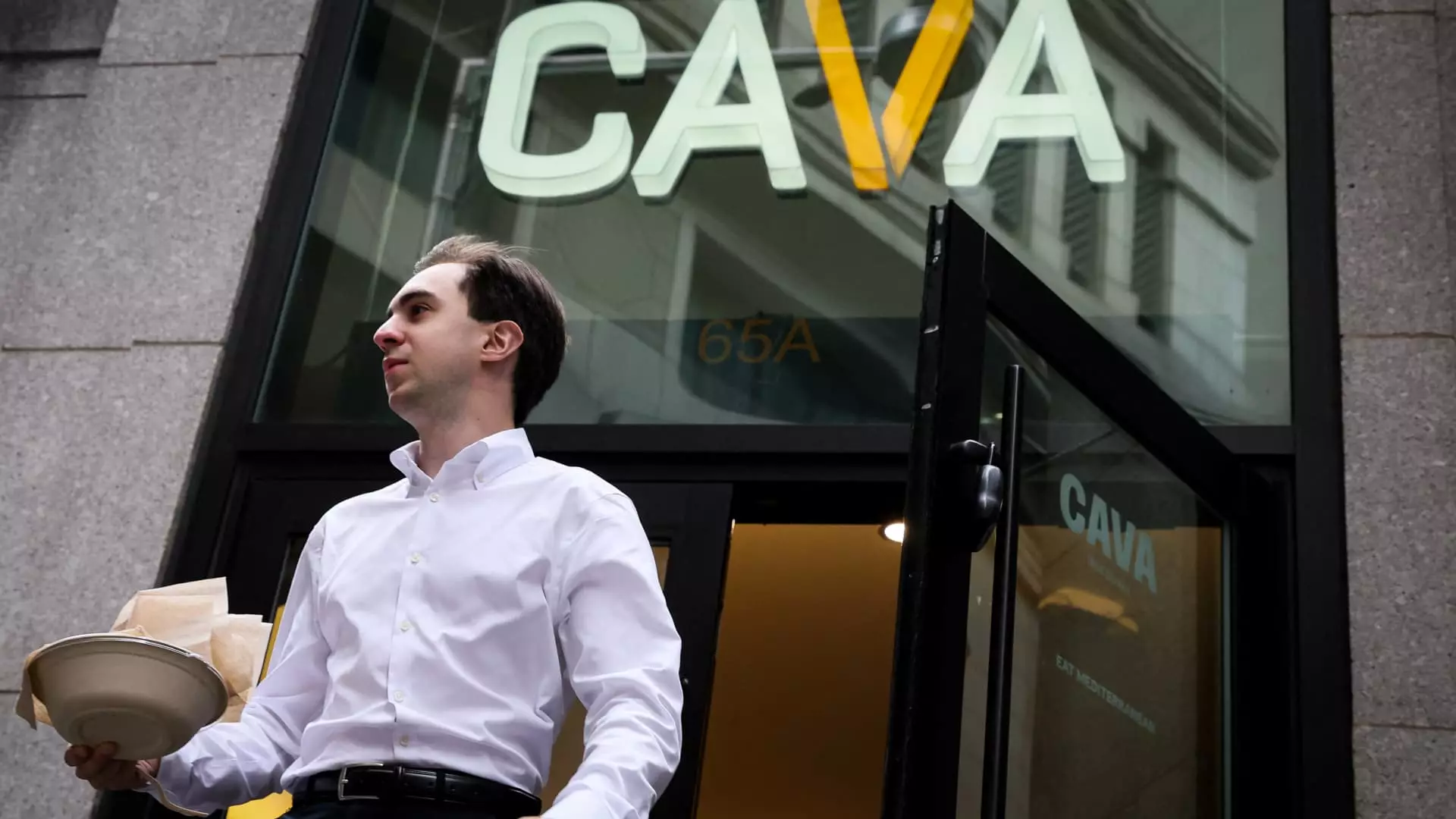As consumers tighten their belts and scrutinize every dollar, the hospitality industry faces an unprecedented challenge: maintaining customer engagement in a climate of economic uncertainty. Fast-casual chains, once reliant on traditional marketing to attract patrons, now recognize that loyalty programs are essential to survival. These initiatives, which provide incentives and perks for returning customers, have evolved from mere incentives into central pillars of strategic growth. The real question is whether they are enough to counteract the broader decline in consumer spending, or if they merely serve as a Band-Aid on a deeper economic wound.
Market data reveals a stark reality—the industry’s foot traffic has stagnated or declined over most of the past year with only sporadic peaks. In such a scenario, the true value of loyalty programs becomes evident: by incentivizing repeat visits, they foster habits that could stabilize revenues. For instance, Starbucks reports over 34 million active rewards members, accounting for more than half of their transactions. Similarly, Chipotle’s loyalty initiative is responsible for nearly 30% of daily sales, a significant figure in an environment riddled with cost-cutting measures. These figures indicate that loyalty isn’t just an ancillary tool anymore; it’s become the backbone of a resilient business model.
The crucial insight is that loyalty programs are uniquely capable of creating a persistent bond between brands and consumers. When a customer earns points or special perks, they are psychologically tethered to a brand, making switching less appealing—even amid economic hardship. This strategic shift is clear among leaders like Starbucks, Chipotle, and Potbelly, who are fostering deeper engagement through digital innovations and creative rewards. As a byproduct, brands are transforming transactional interactions into emotional connections that encourage long-term retention.
Innovation and Flexibility: The New Laws of Customer Retention
Post-pandemic, the traditional concept of loyalty programs—simple discounts and coupons—has been rendered obsolete. Instead, companies are pushing boundaries by reimagining what rewards can look like. Cava, for example, revamped its program to enable flexible earning and redeeming options, including exclusive items like pita chips or full entrees. Their mascot, “Peter Chip,” and themed celebrations such as National Pita Day reflect a deliberate strategy to keep the customer experience fresh and engaging.
Similarly, Potbelly’s shift to a coin-based system exemplifies this creative evolution, emphasizing speed and variety. Their new approach allows customers to access more than a dozen menu items with their points, encouraging frequent visits without the constriction of rigid tiers or complex statuses. The immediate results, as reported, include increased engagement and happier customers—an essential outcome in a tough market.
Even brands like Sweetgreen, which previously relied on tiered subscription models, are not immune to innovation. Their recent move towards straightforward, value-driven rewards signifies an understanding that clarity and simplicity resonate more during economic downturns. Starbucks’ recalibration, such as removing certain bonuses in favor of uniform double-star offers, highlights a balancing act—preserving engagement without diluting the perceived value of the program. Such adjustments reflect a broader industry consensus: adaptability is key in a fluctuating economic landscape.
The most compelling trend is that these programs are moving beyond mere discounts, incorporating gamification, limited-time offers, and surprise perks. These strategies serve dual purposes: they boost short-term traffic and deepen emotional investments. For instance, Chipotle’s “Summer of Extras” campaign, which provides free burritos to dedicated customers competing for top visits, exemplifies how to energize a loyal base while incentivizing increased frequency.
Profits vs. Perks: The Double-Edged Sword of Loyalty Strategies
Despite their undeniable effectiveness, loyalty programs carry an inherent risk: the erosion of profit margins. Offering frequent discounts, freebies, and special rewards compromises immediate profitability, especially for a sector operating with razor-thin margins. Many brands grapple with whether the long-term gains—namely customer retention and increased lifetime value—outweigh the short-term cost of promotions.
Starbucks’ decision to eliminate its reusable cup bonus, replacing it with double stars on all purchases, exemplifies the complex tradeoff. While loyalty remained stable, many loyalists argued that the earning potential was diminished, risking alienation. However, Starbucks’ broader data suggests that such recalibrations do not threaten overall participation, perhaps indicating that customers appreciate transparency and consistency over the illusion of unlimited earning potential.
Furthermore, the move toward digital and swift reward redemption—like Potbelly’s coin-based structure—aims to get customers “ringing the register” faster and more often. The industry’s overarching goal is to foster habits that lead to more substantial, less impulsive spending over time. The challenge lies in ensuring these incentives do not cannibalize full-price sales or lead to a perception that loyalty programs are merely a pathway to freebies, which can devalue the brand’s core offerings.
Finally, the intense focus on digital engagement platforms—apps, digital wallets, and social media—serves as both a strategic advantage and a potential vulnerability. The ease of tracking and rewarding consumer behaviors via digital means amplifies the risk of overreliance on promotions that might, in the long run, cheapen the brand’s premium perception. Nonetheless, in a market where consumer attention spans are fleeting and loyalty is increasingly transactional, these digital innovations remain vital for survival.
As the fast-casual dining ecosystem grapples with economic headwinds, one thing is clear: loyalty programs are no longer optional luxuries but strategic essentials. They serve as a psychological anchor, a marketing tool, and a revenue stabilizer—if wielded wisely. Yet, the industry’s aggressive push into creative, flexible rewards underscores a deeper truth: brands must constantly innovate to keep consumers engaged, especially when economic prospects seem bleak.
In the final analysis, whether loyalty programs are sustainable long-term depends on their ability to balance profitability with genuine customer value. While they are proving their worth in fostering frequent visits and emotional bonds, the danger remains that over-expansion or poorly executed perks may do more harm than good. As companies tighten their focus on meaningful engagement, a cautious skepticism should prevail—because in the game of loyalty, the stakes are high, and the margins are slimmer than ever.

